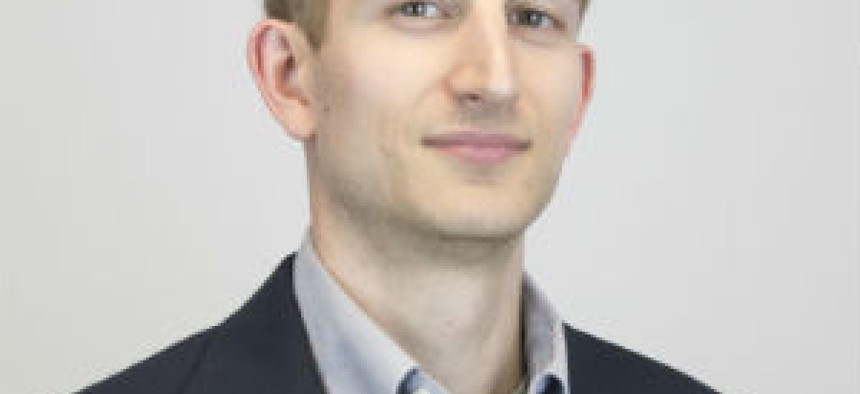Applied Insight moves HQ, rounds out exec team

The next phase of Applied Insight's strategy to become a more formidable mid-tier market player sees the company move its corporate headquarters and round out a nearly dozen-strong executive team.
On the heels of a series of acquisitions, Applied Insight has taken a pair of new steps in its journey toward the middle tier with a move of its corporate headquarters and a rounding out an almost dozen-strong executive leadership team.
Both events are natural next steps for the now Tysons, Virginia-based company as it moves on the integration of its acquired businesses and pursues contract wins to become a more formidable middle-tier player in the government market, AI CEO John Hynes told me Wednesday.
Including agencies and other industry players, Hynes said “the profile of the company is certainly much higher than what it was” six months ago as AI started to embark on its journey.
AI shifted to Tysons from its former hub in Ashburn, Virginia, to be in closer proximity with both industry teammates and competitors, as well as current and prospective government customers. The Tysons site is also closer to AI’s other main hub in Fulton, Maryland -- home to Stratus Solutions, one of its acquisitions.
AI acquired Stratus in February along with Applied Technology Group to add more complex technology work.
“I talk about them as ‘AI North’ and ‘AI South,’” said Hynes, who added that AI holds biweekly meetings among its leaders at both locations.
“The value of everybody being in the room and in the two locations together is tremendous for that integration of culture and thinking about ourselves as one company,” he said.
Hynes joined AI as CEO in January.
The 11 new executive appointments AI made are diverse in that these executives are not just from within the company or its heritage businesses but some are new to the organization entirely such as Chief Financial Officer Mehdi Cherqaoui, who joins from a prior role as Phacil’s CFO. Cherqaoui helped lead Phacil through its recent sale to By Light Professional IT Services.
Applied Insight breaks out its latest key hires into three categories that include leaders of business units, those in corporate support including Cherqaoui as CFO, and executives focused on innovation.
Business unit executives are:
- James Rainey -- senior vice president, intelligence
- Nathan Rickman -- senior vice president, federal civilian
- Bill Kodzis -- senior vice president, defense
Corporate support executives excluding Cherqaoui are:
- Kim Parker -- vice president, contracts, ethics and compliance
- Randy Carr -- vice president, human resources
- Mike Grasso -- senior vice president, business development
Innovation executives are:
- Dede Dascalu -- chief technology officer
- David Boyd -- chief product officer
- Giuseppe “Junior” Crisafulli -- chief information officer
- Purvesh Patel -- senior solutions architect
Of those 11, three are new to AI including Cherqaoui. Many of the rest come from the businesses AI has acquired.
“Part of what we’re doing here is sending strong signals about integration and how we’re preparing ourselves to be able to operate at our size and even larger than that… punching above our weight class, being able to go after bigger things and aspiring to do that,” Hynes said.
With the integration proceeding and executive team in place, AI is also turning attention toward pursuing larger opportunities it feels better positioned for as a larger, 550-employee company of at least $120 million in annual revenue.
While not offering specifics on what those opportunities are, Hynes did offer a glimpse on how AI is evaluating them and deciding what to go after with both its new identity in the market and that of heritage businesses.
“I’m more interested in the attributes of the procurement and then we can work to be sure that if we’re not already known that we are known within that customer in our new identity and our previous identities as required,” Hynes said.
“Companies are morphing and combining and changing, and customers understand that’s going on," he said. "If you explain it to them about why this is better than what we were before they go ‘OK I get it, great.’”


